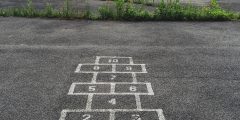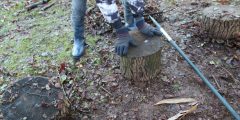Oracy in the classroom: making space for authentic voices
September 26, 2022
In this post, Rupert Knight reflects on recent visits to classrooms to observe practice in oracy (or the skilled use of spoken language) and considers how we can ensure that learning through talk involves authentic pupil voices. The importance of oracy In a previous blog in this series, I outlined some features of oracy, particularly …
Supporting learners with dyscalculia and maths difficulties in the primary classroom
June 22, 2022
In this blog, Natalie Kerslake from Windmill LEAD Academy in Nottingham explores how she first became interested in supporting children with dyscalculia and maths difficulties, before discussing how they can be supported in the primary classroom. I recently had the pleasure of visiting the University of Nottingham, to deliver sessions to the Primary PGCE and …
The Power of an Immersive Curriculum
April 20, 2022
In this post, Thomas Dransfield, Class Teacher and Key Stage Leader at Bramcote Hills Primary School in Nottingham shares some examples of creating immersive environments across the curriculum. Our SPARK Curriculum In recent years, the curriculum has taken precedence amongst educational stakeholders, and rightly so, for it is the quality of a school’s curriculum which …
Why don’t you build me up, buttercup? A Forest School recovery plan.
January 21, 2022
As schools continue to evaluate the impact of Covid-19 on their learners, former Deputy Headteacher, Rachel Peckover, explains how her three-form entry, suburban junior school in the East Midlands, set up Forest School provision. The school aimed to tackle issues around pupils’ social development as a result of lockdown, as well as the rise in …
Harnessing the power of story to promote mathematical learning
December 16, 2021
In this blog post, which was originally published on the 27th Nov, 2020 on ‘Ponderings on maths education’, Catherine Gripton and Helen J Williams explore how to harness the power of story to support mathematical learning. How might picture and story books enhance the mathematical experience we offer young children? All children are entitled to …
A change of perspective: the explanatory power of varied examples
November 17, 2021
In this post, Rupert Knight considers how drawing on varied examples when explaining new concepts can enhance understanding. It builds on previous blogs in this series, particularly those on a teacher’s core practices and on modelling. Showing the essence of an idea through multiple perspectives ‘Jim Jarvis hopped about on the edge of the road, …
What are the signature pedagogies of teacher education?
August 13, 2021
At a time when teacher education is under the spotlight, Rupert Knight revisits Lee Shulman’s idea of signature pedagogies as a way of developing shared, ambitious principles for the education of beginning teachers. Learning to teach in England In the last year, the process of learning to teach has come under renewed scrutiny in England. …
Spatial thinking: the missing piece in mathematics education?
July 1, 2021
In this blog post Catherine Gripton explores the potential of spatial thinking for supporting children’s success in mathematics, starting from the early years of primary school. Spatial thinking improves mathematics learning International rankings for education, such as TIMMS and PISA, compare countries by the performance of children and young people on mathematics tests. These are …
Children reading in lockdown
June 21, 2021
In 2020, the National Literacy’s Trust’s (NLT) research revealed how UK children’s reading practices (age 8-18) changed during the first lockdown (from March 2020). Prior to the lockdown, the Trust’s Annual Literacy Survey had sadly revealed a 15-year low in children’s enjoyment of reading. However, the 2020 survey showed that children read and enjoyed reading …
Using visual models to solve problems and explore relationships in Mathematics: beyond concrete, pictorial, abstract – Part 1
March 18, 2021
This two-part blog series by Marc North explores some thinking and strategies for using representations in Mathematics lessons. Part 1 unpicks some of the key theoretical ideas around the use of representations and models and foregrounds how representations can be used to both solve problems and explore mathematical relationships. Part 2 will illustrate these theoretical …










